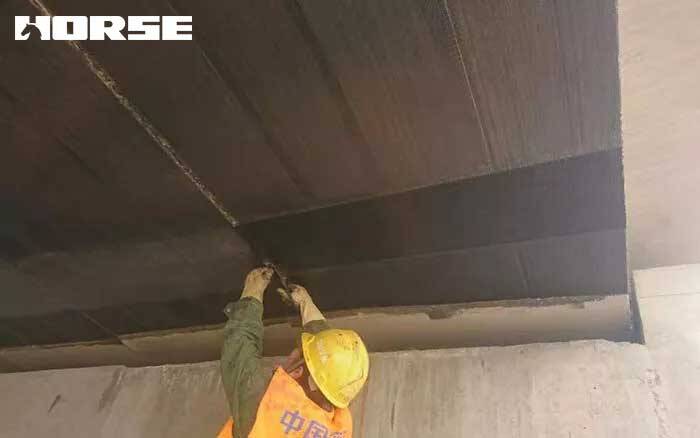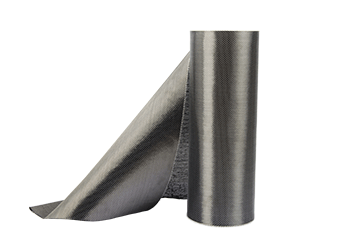Solutions
Horse Construction offers full range of structural strengthening materials with technical supports, documentation supports, products supports, project supports.
bridge reinforcement

With the continuous increase of railway transportation volume and the continuous increase of train speed, the existing old and old bridges have greatly increased due to the limitation of the original construction stage design, construction and materials. In order to ensure the safety of transportation and the requirements of transportation volume, the maintenance and reinforcement of existing bridges are particularly important.
The characteristics of bridge reinforcement
(1) In terms of cost, old bridge reinforcement is more economical than newly built bridges;
(2) There is little interference to the traffic, and the traffic can be kept as far as possible;
(3) The construction technology requires high requirements, and a professional construction team is required;
(4) The maintenance after reinforcement is simple and convenient.
Bridge inspection
Railway bridge inspections are divided into regular inspections, regular inspections, temporary inspections and special inspections. Carry out item-by-item inspections to find out where the disease is on the bridge and analyze its causes. According to the inspection results, test and evaluate the bridge structure, evaluate the working condition of the bridge, and finally determine whether the bridge needs to be reinforced and the reinforcement method suitable for the bridge.
Bridge girder body inspection content
(1) Cracks: the location, width, and development of cracks:
(2) Honeycomb, concrete peeling, exposed tendons, steel bar corrosion, corrosion, accidental damage, etc.:
(3) Structural stability: Check whether the structural stability meets the requirements of high capacity and high speed.
Causes of bridge disease
(1) The design standard of the original construction stage was low or the design was inadequate;
(2) Construction defects, such as poor quality of concrete construction. The gradation is unreasonable. The uneven steel reinforcement concrete protection layer causes part of the skin concrete to peel off and expose the reinforcement;
(3) The volume of transportation continues to increase, and the speed of trains continues to increase. As a result, the excitation frequency of the bridge beam is increased, and the beam body cracks;
(4) The bridge structure is damaged due to natural wear and accidents.
Bridge inspection and evaluation
(1) The history and characteristics of the bridge;
(2) Problems existing in bridge and maintenance;
(3) The carrying capacity of each part of the bridge;
(4) The flood resistance of the bridge;
(5) The seismic capacity of the bridge;
(6) The actual working state of the structure.

Bridge reinforcement method
Existing bridges have a variety of structural forms and geological conditions. At the same time, bridge reinforcement construction is also restricted by driving conditions and construction space. Specific analysis must be carried out according to the actual situation of each bridge, and a suitable reinforcement method must be selected. Railway bridge reinforcement methods include prestressed tendon transverse tension reinforcement method, pasted steel plate method, pasted fiber cloth method, increased moment of inertia method, and comprehensive method.
1) Prestressed tendon transverse tension reinforcement method
The principle of reinforcement is to add a diaphragm beam between two beams with the same hole, and to apply prestress through prestressed tendons to enhance the stability of the beam. The prestressed tendons are connected to the original structure without bonding, and are only connected to the original beam at the uranium lock at the outer end of the beam. Under the condition of a small increase in load on the beam, the rigidity and stability of the beam are greatly improved.
2) Sticking steel plate reinforcement method
The sticking steel plate method is more convenient for construction. Epoxy mortar is used as the adhesive, and the paving bolts are used as the pressure measure of the steel plate to make the steel plate adhere firmly and bear the tensile stress and shear stress generated during structural deformation together with the beam. During construction, attention should be paid to the quality of traceability and bonding between the steel plate and the original structural concrete. The reinforcement effect depends to a large extent on the bonding process and operation level. Disadvantages: steel plates are easy to corrode and need to be rust-proof; increase beam load.
3) Paste fiber cloth method
Fiber is an economical, safe, and reliable new material for strengthening bridges. The construction period is short and the overall cost is low. After reinforcement, it does not affect the appearance of the original structure, basically does not increase the additional load, and does not add additional load-bearing load to the basic structure. After reinforcement, the surface is smooth and the line is smooth.
4) Increase the moment of inertia method
The construction is mainly to widen, thicken and heighten the section to increase the moment of inertia of the section. Drill holes at certain intervals on the lower flange of the beam, trace and fix the steel bars, and chisel the bottom surface of the beam to ensure a good combination of the new and old concrete. The advantages of this method are simple construction technology, strong adaptability, and mature construction technology. The disadvantage is that there are many construction procedures, which reduce the clearance of the bridge, increase the volume and load of the structure, and it is difficult to guarantee the quality of the connection between the new and the old concrete.
5) Comprehensive method
According to the assessment report of the bridge structure, several methods are used to strengthen the different diseases of the bridge.
You can find anything here you are in need of, have a trust trying on these products, you will find the big difference after that.

High strength carbon fiber reinforced polymer (CFRP) strip / laminate / plate for structural strengthening and concrete repair

High strength, unidirectional carbon fiber fabric pre-saturated to form a carbon fiber reinforced polymer (CFRP) fabric used to strengthen structural concrete elements.

High strength, unidirectional carbon fiber sheet pre-saturated to form a carbon fiber reinforced polymer (CFRP) sheet used to strengthen structural concrete elements.